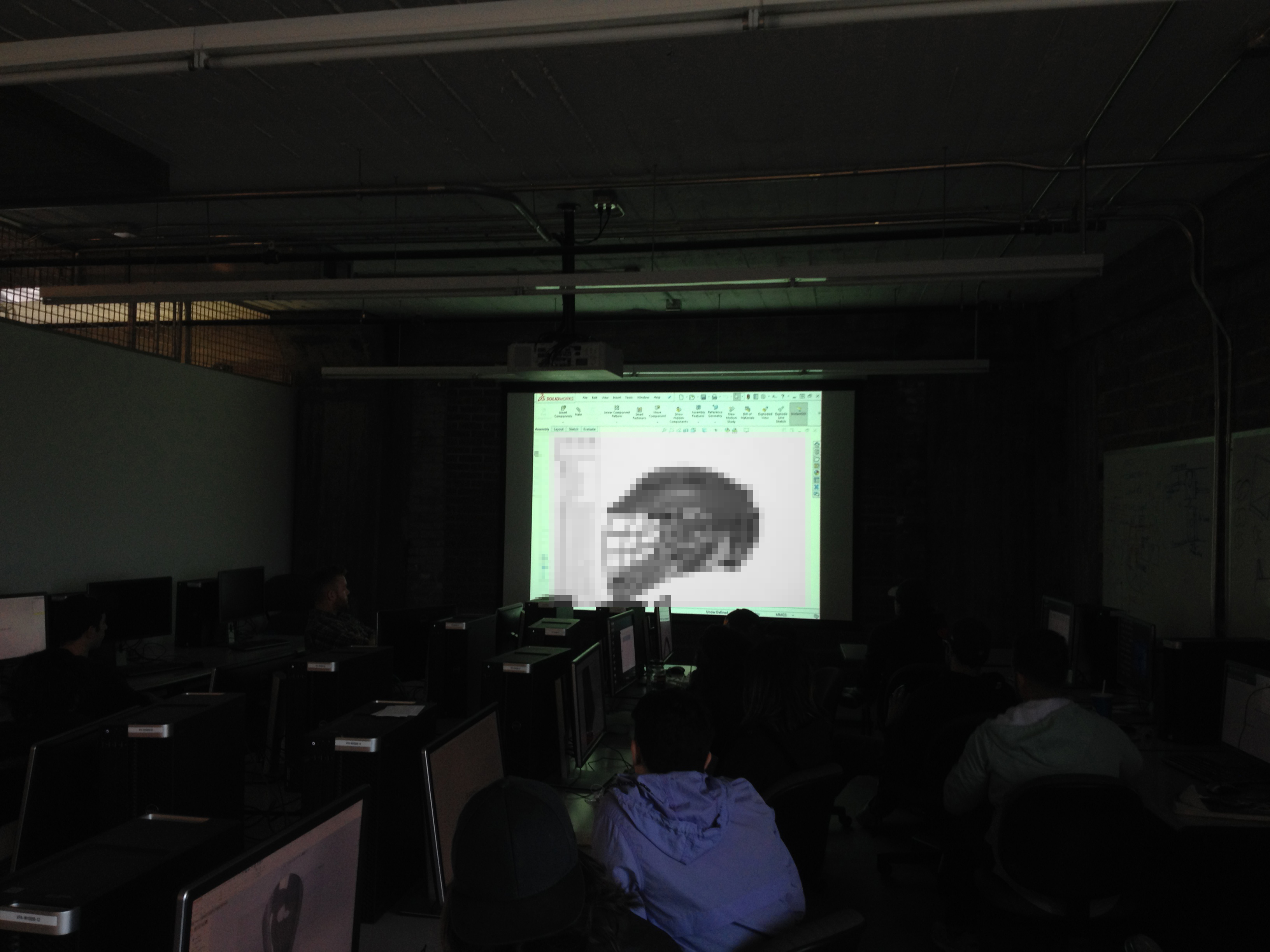This 3rd year course enables students to obtain the highly relevant skill of building digital twins using CAD software and materializing CAD objects by using rapid prototyping technology. Students have access to 3D printers (lulzbot, formlabs), laser-cutters and CNC-milling in our shops.
My guiding principle is “From Art to Part”. Students practice to sketch, hand carve foam, model in CAD, rapid prototype, reassess, refine and render in each assignment.
As the lead instructor, I prepare the syllabus and guide adjunct faculty.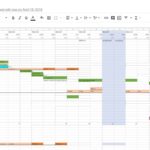
Over the past years, I have developed and refined a scaffolded assignment approach. I use a Gantt Chart on Google Sheets to fine-tune the semester plan. The document is shared with the adjunct faculty. Besides the assignments, many in-class exercises gradually build the students skills over the course of the semester.
The skills earned are essential in the daily work of a designer. I always guide decision making in the design of the content of this course by what is commonly expected in industry from Junior Designers.
Assignment Examples
Assignment: Seating Opportunity (medium complexity)
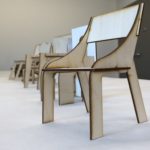 Students learn about parts and assemblies. After following a demo step by step, the students are tasked to design their own flat pack furniture and build a scale model using the laser cutter as a rapid prototyping tool. Projects were exhibited in the studio space to enhance visibility of student work.
Students learn about parts and assemblies. After following a demo step by step, the students are tasked to design their own flat pack furniture and build a scale model using the laser cutter as a rapid prototyping tool. Projects were exhibited in the studio space to enhance visibility of student work.
Assignment: IID Tree (medium complexity)
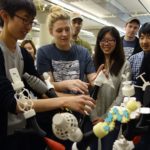 Students learn about converting an idea into a SolidWorks file and adhering to certain dimensional constraints. Project parts were 3D printed and then assembled in the studio to form a tree-like sculpture. The themes and communicated values are based on the prompt “I love IID, because…”.
Students learn about converting an idea into a SolidWorks file and adhering to certain dimensional constraints. Project parts were 3D printed and then assembled in the studio to form a tree-like sculpture. The themes and communicated values are based on the prompt “I love IID, because…”.
Assignment: Ramp Race (medium complexity)
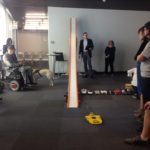 The students work in teams of two and receive a selection of semi-finished parts for a derby vehicle that runs down a ramp. The teams had to design the vehicle by adhering to dimensional constraints and the utilization of three rapid prototyping techniques: 3D printing, vacuum forming and laser cutting. Testing was required and the project culminated in an exciting competition highly visible to the community in the warehouse lobby during lunch time. Both sections competed simultaneously.
The students work in teams of two and receive a selection of semi-finished parts for a derby vehicle that runs down a ramp. The teams had to design the vehicle by adhering to dimensional constraints and the utilization of three rapid prototyping techniques: 3D printing, vacuum forming and laser cutting. Testing was required and the project culminated in an exciting competition highly visible to the community in the warehouse lobby during lunch time. Both sections competed simultaneously.
Assignment: Electric Vehicle (EV) Charger (high complexity)
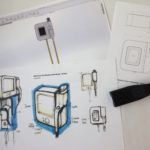 This project is the crown jewel of the semester. Students design an EV handle that incorporates existing parts (SAE J1772 connector). Based on a chosen brand the design embodies characteristics of a visual brand language. The students go through a multi-week design process from an inspiration board to sketches to hand carved foam models. Human factors of hands are emphasized. Then the final foam model is used to create templates, which are translated into CAD to drive the surface design. That revised design is then CNC-milled in two halves for evaluation. This is a great teaching moment: Is the CAD design holding up to the promise of the hand carved model and the overall concept? Finally, time is dedicated to rebuild the CAD model and to add manufacturing details for a 3D print with part lines, mounting bosses and fitting internal parts such as the SAE J1772.
This project is the crown jewel of the semester. Students design an EV handle that incorporates existing parts (SAE J1772 connector). Based on a chosen brand the design embodies characteristics of a visual brand language. The students go through a multi-week design process from an inspiration board to sketches to hand carved foam models. Human factors of hands are emphasized. Then the final foam model is used to create templates, which are translated into CAD to drive the surface design. That revised design is then CNC-milled in two halves for evaluation. This is a great teaching moment: Is the CAD design holding up to the promise of the hand carved model and the overall concept? Finally, time is dedicated to rebuild the CAD model and to add manufacturing details for a 3D print with part lines, mounting bosses and fitting internal parts such as the SAE J1772.
Cascade field trip
We visited the Cascade Maverik Lacrosse headquarter, hosted by industrial design director Mike Chmelik. The students were able to observe the assembly line and learn about the product line in the conference room.

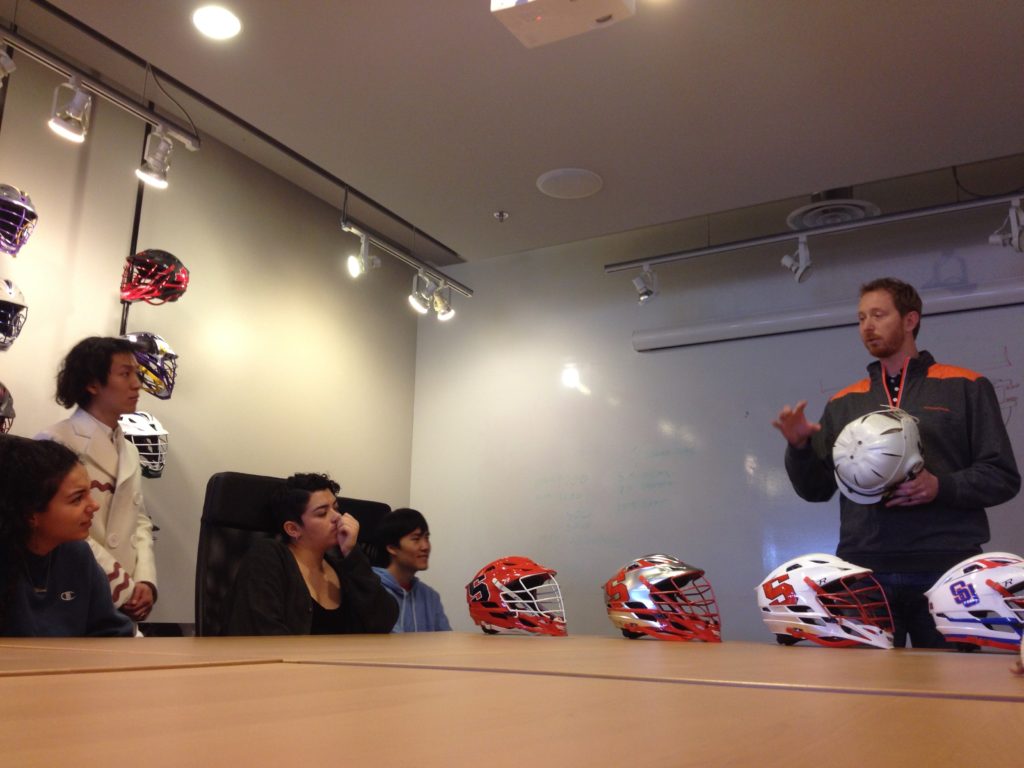

The following week, Mike visited us in the computer lab. He showed a couple example files and explained how they set up their SolidWorks files. Furthermore, he demonstrated the parent-child surface modeling approach.
